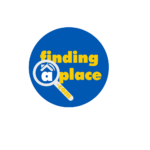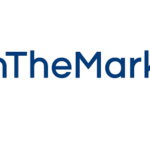Week 24: How to Become a Digital-First Owner (And Why It Pays)
In this weekly series, we explore how the commercial real estate industry is being transformed by data and digital infrastructure. Guided by the principles in Peak Property Performance, we unpack a new idea every week to help owners unlock value, reduce risk, and future-proof their portfolios. Learn more about OpticWise and Bill Douglas, the authors of this series.
The term “digital-first” gets thrown around a lot—but in commercial real estate, it’s more than a buzzword.
It’s a strategic posture. A way of thinking. A readiness to compete in a world where data and systems drive everything from underwriting to tenant experience.
And it’s no longer optional.
What Is a Digital-First Owner?
Being digital-first doesn’t mean becoming a tech company. It means using digital and data infrastructure (DDI) to enhance core CRE priorities: asset performance, NOI, tenant satisfaction, and risk management.
A digital-first owner:
- Sees data as a core asset—not a byproduct
- Demands infrastructure control—not vendor dependency
- Designs buildings with digital pathways first—not last
- Embeds technology decisions into capex, leasing, and operations
- Leads with intelligence—not guesswork
Most importantly, a digital-first owner makes DDI a strategic priority, not an afterthought.
Why It Pays to Lead with Digital
Digital-first owners are outperforming their peers. Not because of flashy apps—but because of compounding advantages:
- Lower OPEX through automation, predictive maintenance, and real-time monitoring
- Higher tenant retention thanks to frictionless digital experiences
- Faster leasing with connected systems that accelerate marketing and onboarding
- Reduced insurance premiums (see last week’s post)
- ESG credibility powered by real-time data, not stale reports
- Portfolio intelligence that turns raw data into smart decisions
Digital-first ownership drives enterprise value. Period.
How to Become a Digital-First Owner
Here’s how to get started—whether you own a single building or manage a national portfolio:
1. Take Inventory of Your DDI
What systems are connected? Who owns & controls your data? What can your building “see” right now? You need a clear picture of your current digital infrastructure maturity.
2. Unify Connectivity
Your building needs a secure, property-wide connectivity layer to support systems, sensors, and future applications. If you’re still using fragmented networks or relying on tenant installs, start here.
3. Establish Data Ownership
You can’t be digital-first if third-party vendors control your data. Reclaim control across access control, HVAC, surveillance, energy systems, and many others.
4. Build a Platform for Data Leverage
Digital-first doesn’t mean “add more tech.” It means connecting what you have, normalizing the data, and activating it for decision-making.
5. Audit Your Digital Readiness
That’s where the PPP Digital Infrastructure Review comes in. It evaluates six key domains of DDI—giving you a tailored roadmap to become digital-first on your terms.
Don’t Get Left Behind
In a world of rising costs, tighter margins, and smarter tenants, the owners who win are the ones who see DDI as a strategic foundation.
Becoming digital-first isn’t about chasing every new technology.
It’s about building a resilient, connected, intelligent property—and portfolio—that can adapt and compete.
Andrew Stanton CEO Proptech-PR
Andrew Stanton Founder & Editor of 'PROPTECH-X' where his insights, connections, analysis and commentary on proptech and real estate are based on writing 1.3M words annually. Plus meeting 1,000 Proptech founders, critiquing 400 decks and having had 130 clients as CEO of 'PROPTECH-PR', a consultancy for Proptech founders seeking growth and exit strategies. He also acts as an advisory for major global real estate companies on sales, acquisitions, market positioning & operations. With 200K followers & readers, he is the 'Proptech Realestate Influencer.'




















